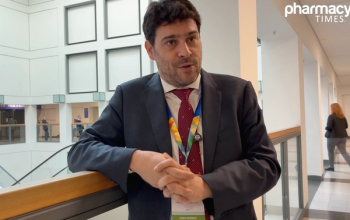
Fun Fact: How Did Father Hell Cure His Patients of Rheumatism in the 1770s?
Key Takeaways
- Father Hell's use of magnetized loadstone plates for rheumatism influenced Mesmer's theories on magnetic fluid imbalances in the body.
- Mesmer's "animal magnetism" posited that he could manipulate magnetic fluids within patients, initially using magnets, then his hands.
In Vienna in the 1770s, a young physician named Franz Friedrich Anton Mesmer happened to meet a Jesuit priest named Maximilian Hell who was conducting medical experiments on patients with rheumatism.
Question: How did Father Hell cure his patients of rheumatism in the 1770s?
Answer: With magnetized loadstone plates
In Vienna in the 1770s, a young physician named Franz Friedrich Anton Mesmer happened to meet a Jesuit priest named Maximilian Hell who was conducting medical experiments using magnetized loadstone plates. During one such experiment, Mesmer watched as Father Hell placed the plates on the naked bodies of his patients to cure them of their rheumatism.
Father Hell’s experiment had a pronounced effect on Mesmer, who soon began to conduct some experiments of his own. However, Mesmer believed this cure could be adapted to become a theory of medicine more broadly, relating all disease to the imbalance of a magnetic fluid present in bodies that was susceptible to gravitational force.
Although Mesmer first believed he could bring the body’s natural magnetic fluid into balance using magnets, he soon realized that the real magnetic power he was seeking all along was inside himself.
He called this discovery of his power to manipulate magnetic fluids his “animal magnetism.” Mesmer learned of this power after borrowing some magnetic plates from Father Hell and using them to treat Franziska Oesterlin, a young female “hysteric” who was suffering from convulsions in Vienna.
While Oesterlin was convulsing, Mesmer would place plates on her stomach and legs. Oesterlin explained she could feel “painful currents of a subtle material” shooting through her body. She reported that the currents helped to reduce her convulsions significantly.
Over the next 2 years of treating Oesterlin, Mesmer came to realize that he could produce the same beneficial effects by passing his hands over Oesterlin’s body in the direction he wanted the magnetic fluid to travel.
In a letter to a friend, Mesmer explained, “I have observed that the magnetic is almost the same thing as the electric fluid, and that it may be propagated in the same manner, by means of intermediate bodies. Steel is not the only substance adapted to this purpose. I have rendered paper, bread, wool, silk, stones, leather, glass, wood, men, and dogs—in short, everything I touched—magnetic to such a degree that these substances produced the same effects as the loadstone on diseased persons.”
After a scandal in which he was accused of getting a little too close to a young, blind, female piano prodigy in Vienna, Mesmer moved to Paris, where his attractiveness and preternatural self-confidence found a natural sympathy in the French people.
In 1778, he established a magnetic healing practice that he conducted for an audience of Parisian high society. The high drama and sexual undertones made these shows a smashing success, growing Mesmer’s fame throughout the city.
Due to this success, Mesmer wrote the queen, Marie Antoinette, offering his gifts to her if she gave him a chateau and a significant annual income.
He explained in the letter to the queen, “My discovery ought to be received and rewarded with munificence worthy of the monarch to whom I shall attach myself.”
The queen’s advisers replied, offering Mesmer an annual fee of 20,000 francs if he was able to prove the efficacy of his medical discovery to an audience of the king’s physicians.
Upon receiving this reply, Mesmer demurred, proclaiming his distaste for all wealth before fleeing Paris and heading to Belgium. Some enthusiastic followers came with Mesmer, one of whom established a subscription service in his name, allowing those left behind in Paris to remain linked to Mesmer’s gifts. For 100 louis, these followers could receive a letter containing Mesmer’s secrets.
Mesmer gathered a sum of 140,000 francs from these subscriptions while living abroad. After overcoming his distaste for wealth, Mesmer returned to Paris and encouraged his subscribers to further spread his secrets throughout France by establishing Societies of Harmony.
As the medicinal trend of animal magnetism was sweeping across France in 1784, the French Academy of Science decided to investigate the validity of Mesmer’s claims. The visiting American dignitary Benjamin Franklin was asked to join the investigation as well.
After some deliberation, the academy concluded that magnetic fluid was actually not a thing, and that Mesmer instead had used the power of suggestion to invoke a powerful placebo effect in his patients.
Mesmer fled France for good this time, wandering Europe for some years before dying in Austria in 1815. However, his legacy lives on, as to “mesmerize” is still listed in the dictionary today as to hypnotize or spellbind.
REFERENCE
Kang L, Pedersen N. Quackery: A Brief History of the Worst Ways to Cure Everything. New York, NY: Workman Publishing; 2017.
Newsletter
Stay informed on drug updates, treatment guidelines, and pharmacy practice trends—subscribe to Pharmacy Times for weekly clinical insights.























































































































































































































